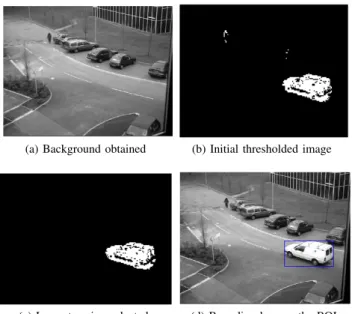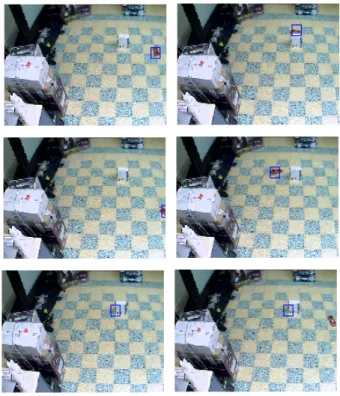Tracking in Presence of Total Occlusion and Size Variation using Mean Shift and Kalman Filter
Texte intégral
Figure


Documents relatifs
EMSO is the European counterpart to similar large-scale systems in various stages of development around the world (see Favali et al., 2010): United States (Ocean Observatories
The second simulation is to use RANSAC and Kalman filter to track a moving needle in a series of 16 simulated ultrasound volumes and estimate the position of metallic needle.
In this paper, we propose bio-inspired motions to improve the localization and the recognition of sphere by the electric sense using the Unscented Kalman filter. Two sensors model
to the FOM and the serial approach is expected.. TEST CASE - BACKWARD FACING STEP.. TEST CASE - BACKWARD FACING STEP.. TEST CASE - BACKWARD FACING STEP.. the same number of basis),
This paper provides the closed-form expression of the optimal AR(1) parameter under minimum asymptotic variance criterion and the approximated expression of the estimation variance
(b) The desired firing rate specifies a working memory behavior: when the amplitude of the input reaches a threshold, the stimulus enters the working memory and stays there until
In this paper, building upon the recent advances of deep learning, we propose to use a RNN to dynamically adapt the process noise of a constant velocity Kalman filter, which we called
Here, we generate three different datasets (true state, noisy observations and analog database) using the ex- act Lorenz-63 differential equations with the classical parameters ρ =
